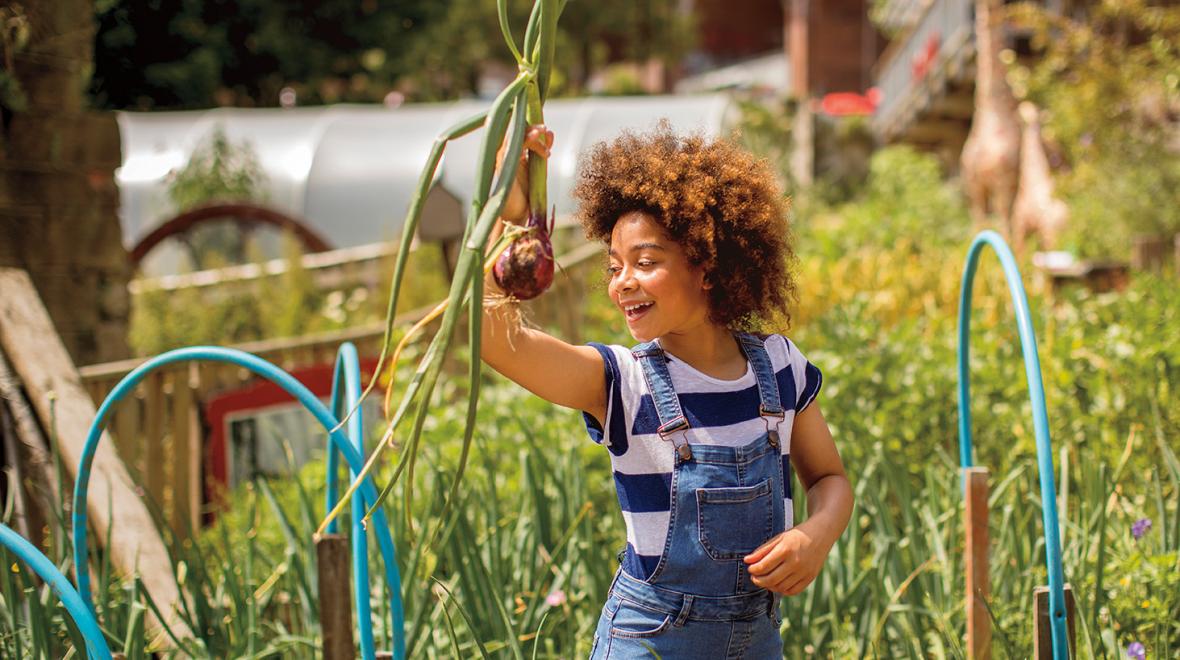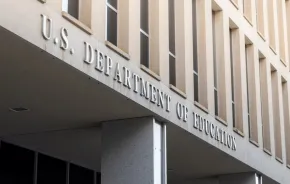
Washington Green Schools started with the innovative idea that students can learn about the environment by making sustainable changes to their own schools. Today, the statewide nonprofit is offering a suite of K–12 education resources and services in environmental learning and action. After a decade of creative problem-solving in service to environmental education, Washington Green Schools has accepted the challenges presented by the pandemic as new opportunities to innovate.
Rooted on campus
Washington Green Schools’ flagship program is a certification system that guides individual schools toward more sustainable operations while providing environmental education. Participating schools form “green teams” of staff and students that develop a hands-on project to improve their school’s performance in one of six environmental categories: energy, healthy buildings, grounds and gardens, transportation, waste and recycling, and water. Schools that complete their project by year’s end receive certification. Some schools participate year after year, earning higher levels as they work through all six categories and set new goals in previously completed ones.
Growing programs
“We view teachers as heroes in our communities, and they are doing so much to support students and families, and, of course, preparing kids for the future. That includes science education,” says Meredith Lohr, executive director of Washington Green Schools. While the certification program continues to be popular, Lohr says, teachers at some schools needed support that was more grounded in classroom learning.
“So, we’ve developed different programs that connect to academic learning requirements at different grade levels,” she says. These curriculum programs are driven by state science standards and always include a hands-on component. One of the most popular, Zombie Guacamole, teaches fifth-graders about decomposition, ecosystem resource cycling and waste reduction.
Beginning in 2018, Washington Green Schools developed ClimEd, a teacher training program focused on climate science. Last year, more than 500 teachers from all over the state participated in the training. The communities they serve range from rural areas where climate change denial is still common to diverse urban communities experiencing environmental injustice. ClimEd strives to present the best available science in a way that is broadly approachable.
“There are two main characteristics of our approach. One is we really focus on what’s local, on things that matter to people in Washington. Things like fires, droughts and coastal hazards, like the impact on our fisheries and our shellfish and agriculture. So, we really connect to local impacts, and we also focus on solutions,” says Lohr. ClimEd looks at both large-scale solutions and actions that communities can take to tackle climate change.
Opportunity from crisis
School closures in March put the kibosh on most Earth Day plans, and only a few schools were close to completing their certification projects so early in the year. So Green Schools extended the certification deadline and shifted its attention to what was possible.
“We, like everyone, had to quickly pivot to new ways of working. The good news is I think we’re actually learning a lot about what is possible in education. We’ve found that by moving trainings online, we can get people who would have real barriers to attend to tune in and receive resources they can use with their students, whether school is in person or online,” says Lohr.
Washington Green Schools offered nine trainings online this spring, reaching 212 teachers in 27 counties. In the process, it learned to break daylong in-person trainings into shorter virtual sessions and to use breakout rooms to create opportunities for individuals to connect and build community.
“Some of these things are just having to think creatively and work with our partners collaboratively to best support students and teachers and families in this time when we all need each other,” says Lohr. “How can we try to re-create the feeling of being in community even over the internet? How can we be a part of solving the problems that people are facing and continue to help stay focused on protecting the environment and educating the next generation of leaders?”
Environmental justice
The pandemic shined a light on inequities in the school system that some of Washington Green Schools’ newer programs were well positioned to help address. One such program was the curricular supplement Breathing Easier, which introduces third-graders to environmental justice and air quality
“We helped support a food recovery program in Seattle Public Schools where uneaten food from four pilot schools would go to hungry people in the community through a partnership we set up with Operation: Sack Lunch [OSL].” The partnership with OSL was so successful that it has already expanded to the entire district, eliminating the waste of thousands of pounds of food, and getting more food to hungry families.
Our state has 30,000 migrant students, many of whom do not speak English at home and had already faced challenges to the continuity of their education before the shutdown. “Over the summer, we supported at-home summer school. Working with five different school districts, we created a program about migrating monarch butterflies and we adapted some of our other resources so that migrant students could continue their education over the summer,” says Lohr.
Fall focus
Place-based education has always been the foundation of Washington Green Schools’ approach to learning.
This approach “helps people develop a sense of stewardship for the place you call home. Now, because we’re all at home, we have some interesting opportunities to do more place-based learning,” notes Lohr. She is not the only person making that observation. One proposal for Seattle Public Schools’ 2020–21 school year suggested moving most students to outdoor classrooms in the fall.
However, Washington Green Schools is operating under the assumption that remote learning will be a major component of the coming school year. The organization is developing home-based activities for students in kindergarten through eighth grade (K–6 in Spanish); teachers can send the activities packets home with school lunches, and or families can download them for free. It also is expanding its online carbon calculator to include actions families can take at home to reduce their carbon footprint.
Lohr says, “We have to face this pandemic. But climate change is not going away because of it. We can’t ignore the next crisis. I’m glad teachers are still willing to tackle it.”











